
For years I commuted to work in London on the underground to Euston station. I’d walk through its miles of tunnels and down to the Northern Line every day – usually on autopilot and hardly noticing where I was. But I never knew I’d been walking right past the entrance to a network of Euston’s lost tunnels, some of which have been sealed off for over 100 years.
Most of the time these underground tunnels are locked away and inaccessible to the public, but every now and then special Hidden London tours run by the London Transport Museum let you get a glimpse into the hidden tunnels and ventilation shafts right below our feet. When I found out I couldn’t resist a trip underground to uncover Euston’s secret tunnels.
Read more: Hidden London tours: The secrets of Down Street Tube station
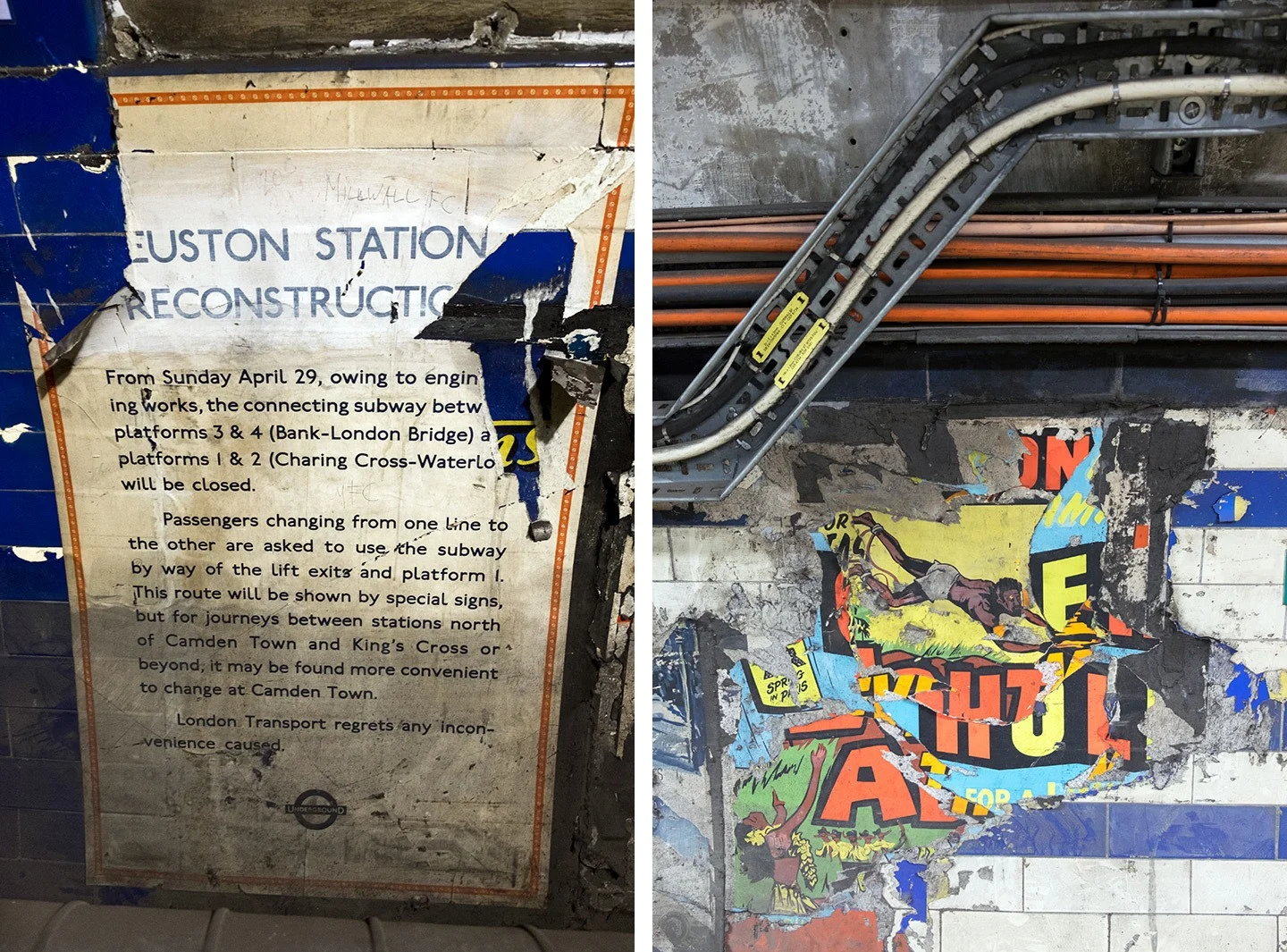
Vintage station posters
The history of Euston Tube station
Euston station opened in July 1837 as the terminus of the new London & Birmingham Railway, which connected London and the Midlands for the first time. Back in those days the station only had two platforms – one for arrivals and one for departures. Later on more routes were added to Manchester, Liverpool, Glasgow and Edinburgh, and passenger numbers grew and grew.
In 1903, two rival companies were given permission to build underground railway stations at Euston so they could take advantage of all this extra traffic. But they weren’t allowed to build an entrance inside the station. Instead two separate stations were built, with one on each side of the mainline station and a shared underground ticket office built in between them.
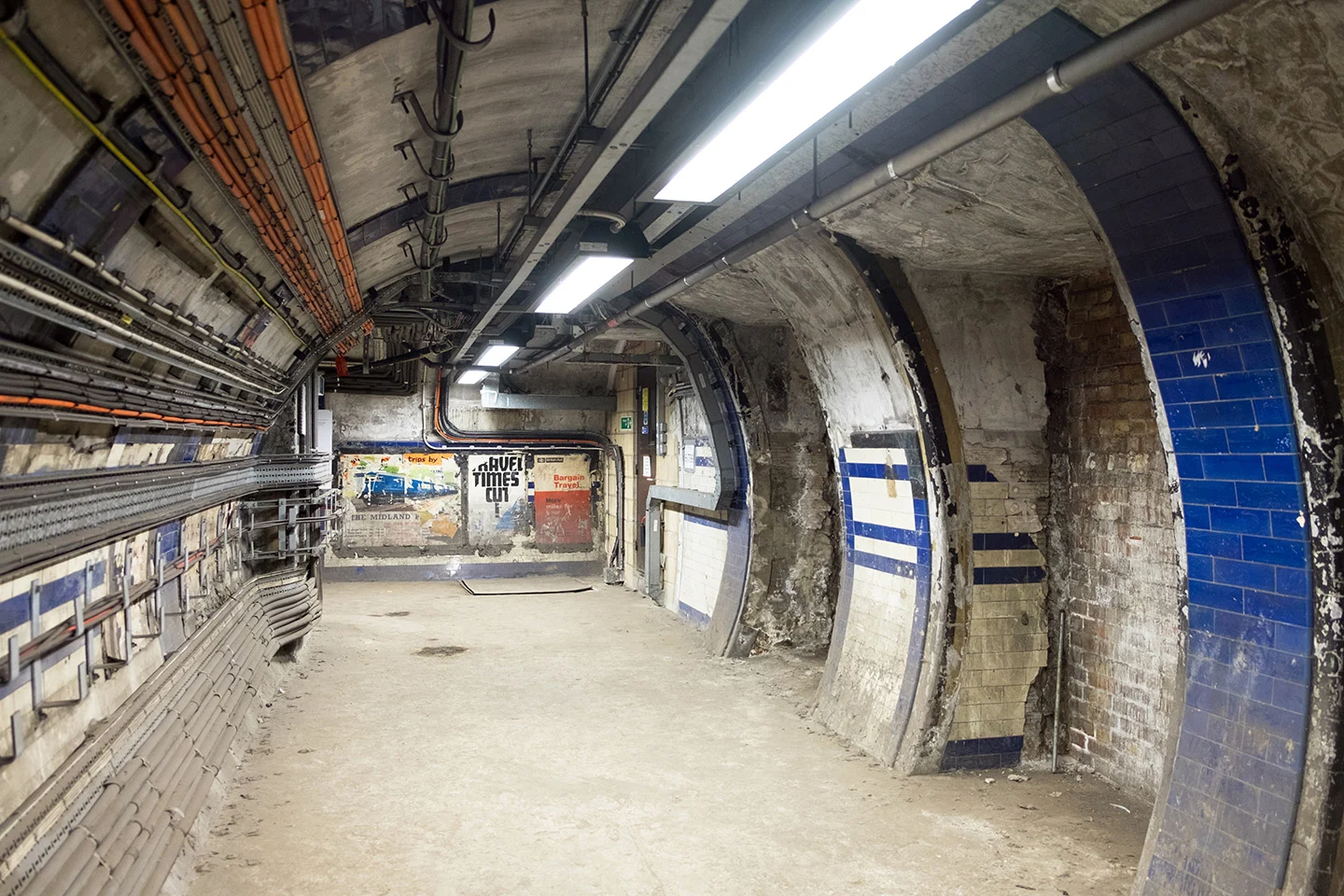
Euston’s secret tunnels
In 1914, the two underground railway companies were merged and their station buildings were closed. The City and South London Railway building was demolished, but the Charing Cross, Euston & Hampstead Railway’s original station is still standing – and was the starting point for our tour of Euston’s lost tunnels. Located in Melton Street to the west of Euston, I’d probably walked past the building plenty of times over the years without ever noticing it.
But it still has that classic London Underground look, designed by architect Leslie Green who’s responsible for designing 50 Tube stations in the mid 1900s, with their distinctive arched windows and ox-blood red tiles. The building’s still in tact from the outside, but all that’s left inside now is a huge ventilation shaft that helps cool the Victoria Line platforms down.
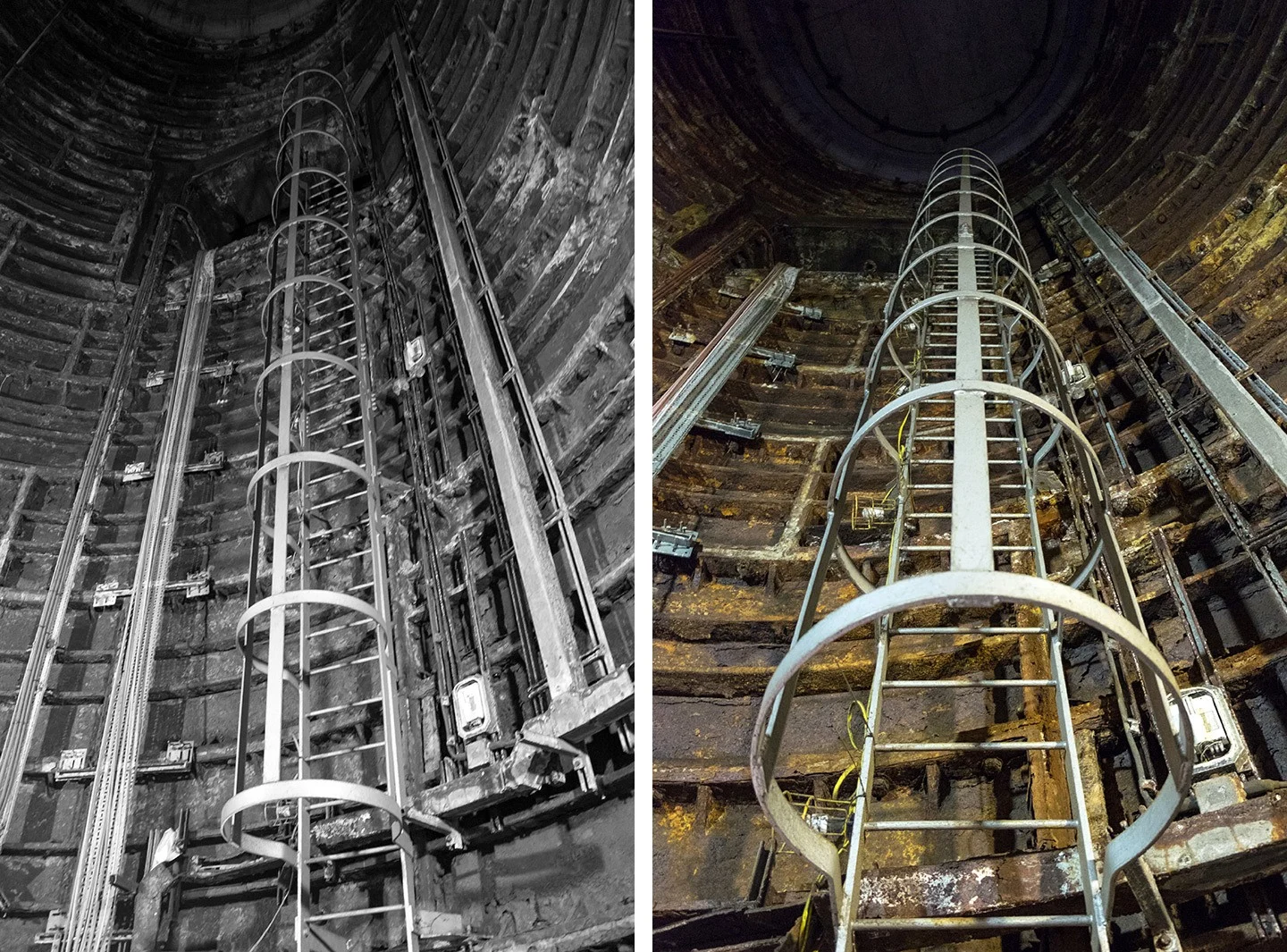
The old lift shaft turned ventilation
Hidden London’s Euston’s Lost Tunnels tour
Before setting off on the tour, our group were kitted out in yellow high-vis jackets. You’re also advised to wear closed shoes – and probably want to avoid wearing white as it’s pretty grimy underground. Our journey into Euston’s secret tunnels started in one of the less mysterious ones – the Bank branch of the Northern Line. But we left the commuters behind on the platform and followed our guide through an unassuming door at the end of the platform.
When we emerged on the other side, we’d gone back in time. Inside was a network of old tunnels and ventilation shafts. Some were abandoned in the 1960s and some go even further back. Some are brightly lit and piled up with tools and spares, and others are dark, deserted and dusty.
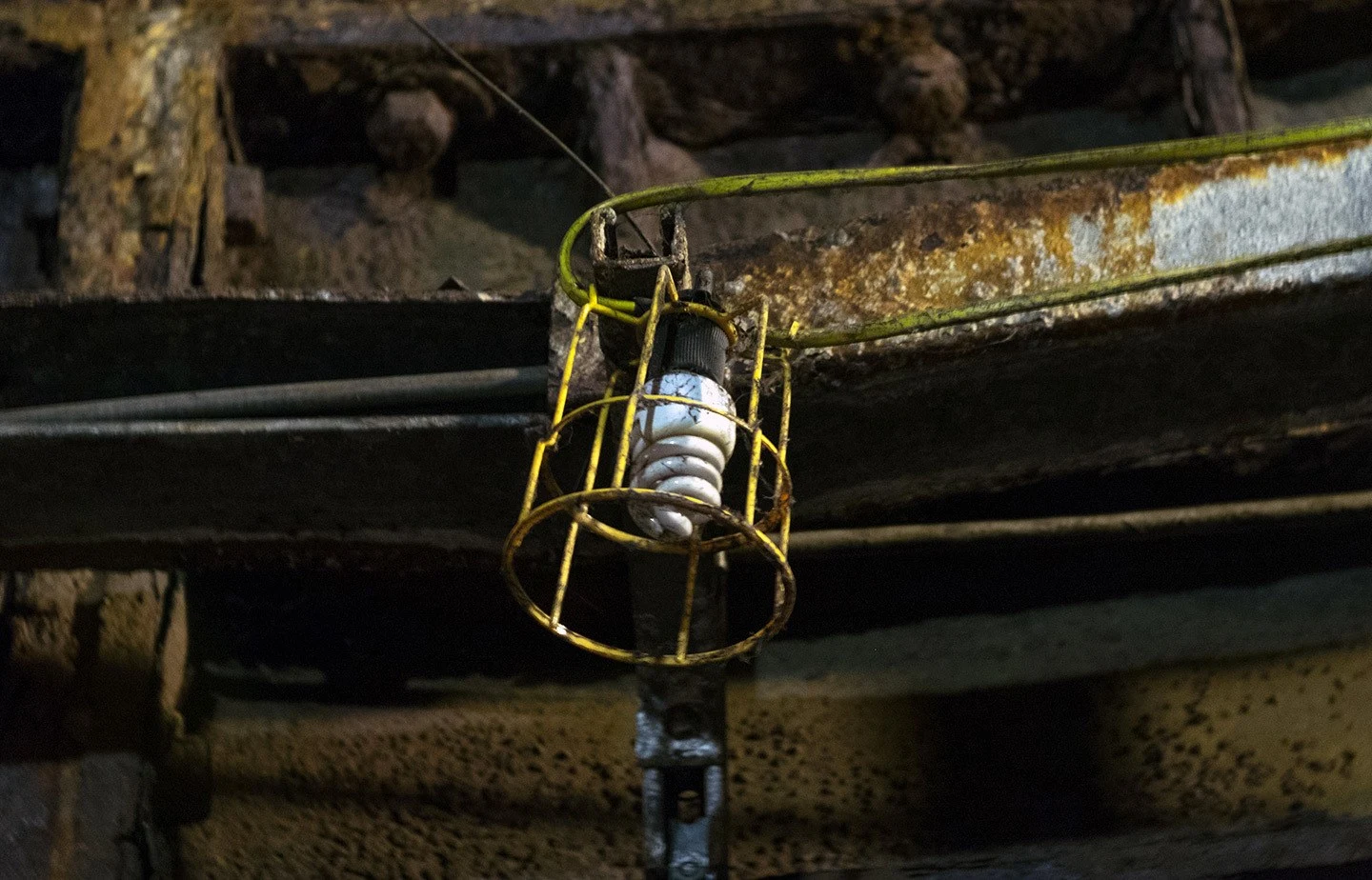
A bit of mood lighting
The tunnels are a time capsule of what was happening when the platforms were closed. Posters from the 1960s show films, plays and products that were being advertised then – from Psycho to perms. There’s even a poster announcing the station redevelopment that led to these tunnels closing. ‘London Transport regrets any inconvenience caused’ – some things don’t change!
The tour takes you through different sections of tunnels, with a guide to explain what each was used for and when it was closed. We were on a special extended photography tour, so our group of eight was split into four pairs and was given 20 minutes to spend in each section, long enough to really explore each area and uncover – and photograph – its hidden details.

1960s posters
First up was the old lift shafts, now used as ventilation shafts for the Tube. They stretch 18 metres high, with a maintenance ladder running to the top. There’s a hatch up there and I could imagine someone scaring the passengers by suddenly popping up out of the ground. Walking on through the tunnels, we came to one of Euston’s unique quirks – its underground ticket hall.
This was the crossover point between the two original underground railways, where passengers had to pay to swap from one line to the other. And if they tried to sneak by, the office had windows built into the sides so the ticket inspector could spot any fare-dodgers. It’s really well preserved with all of its original tiling – and I couldn’t resist trying out the window.
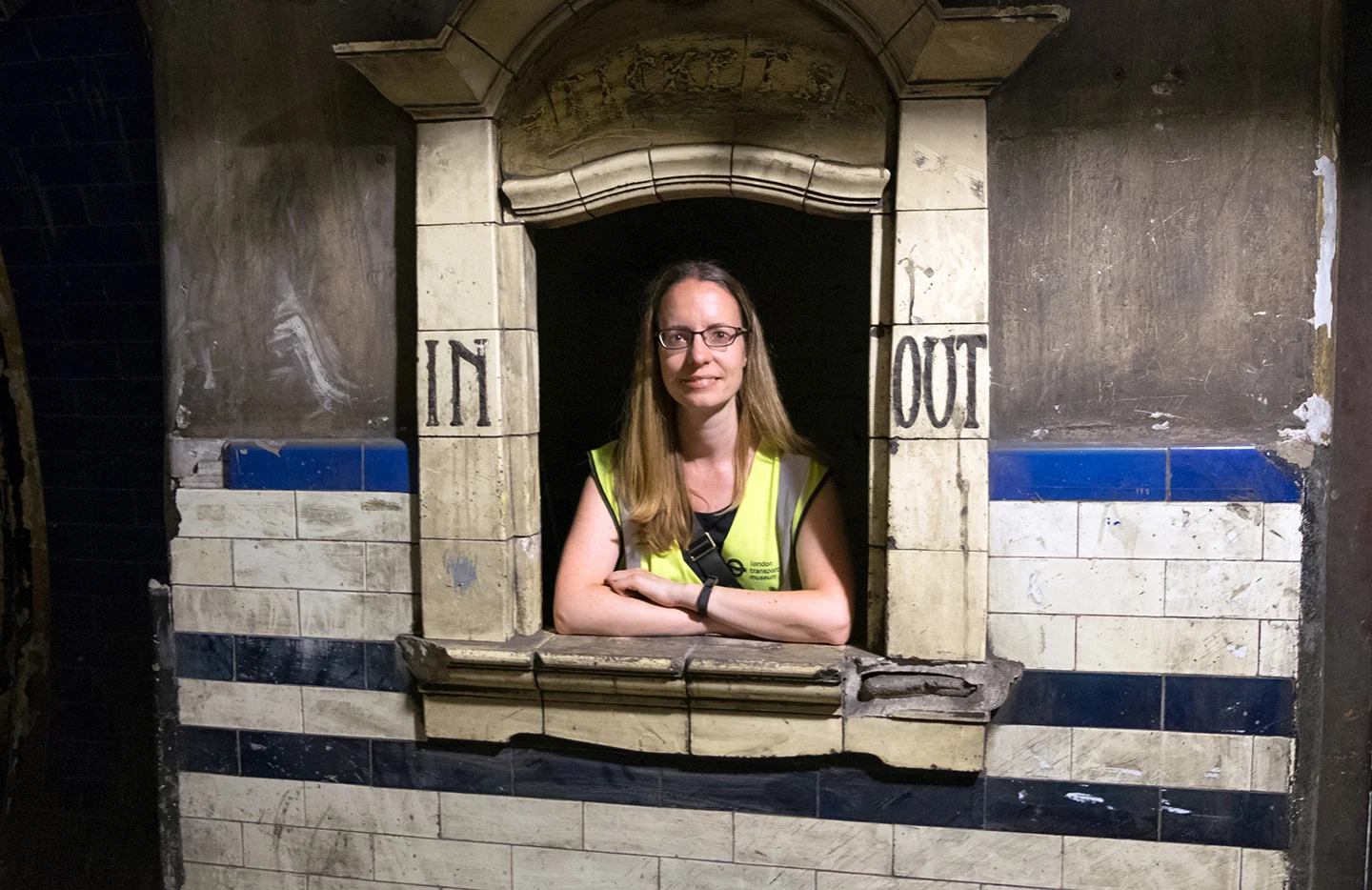
Euston’s underground ticket office
As well as the old passenger tunnels and platforms, we also got to walk through some of the ventilation tunnels. These were never designed to be seen by the public, so there were no posters or tiles, just an industrial landscape of metal tubes and bolts, coated with years of grime. With just a few bulbs hanging down and no one else around they felt spookily atmospheric.
In some sections we had to find our way by torchlight, past bricked up doors and dead ends – you could imagine how claustrophobic it’d be down there if you didn’t have someone guiding you. Our final stop was a zig-zag walkway with ventilation grills looking down on the Victoria Line platform, where you could see trains coming and going, and passengers getting on and off. So if you ever feel like someone’s watching you on the Tube platform, they could be!
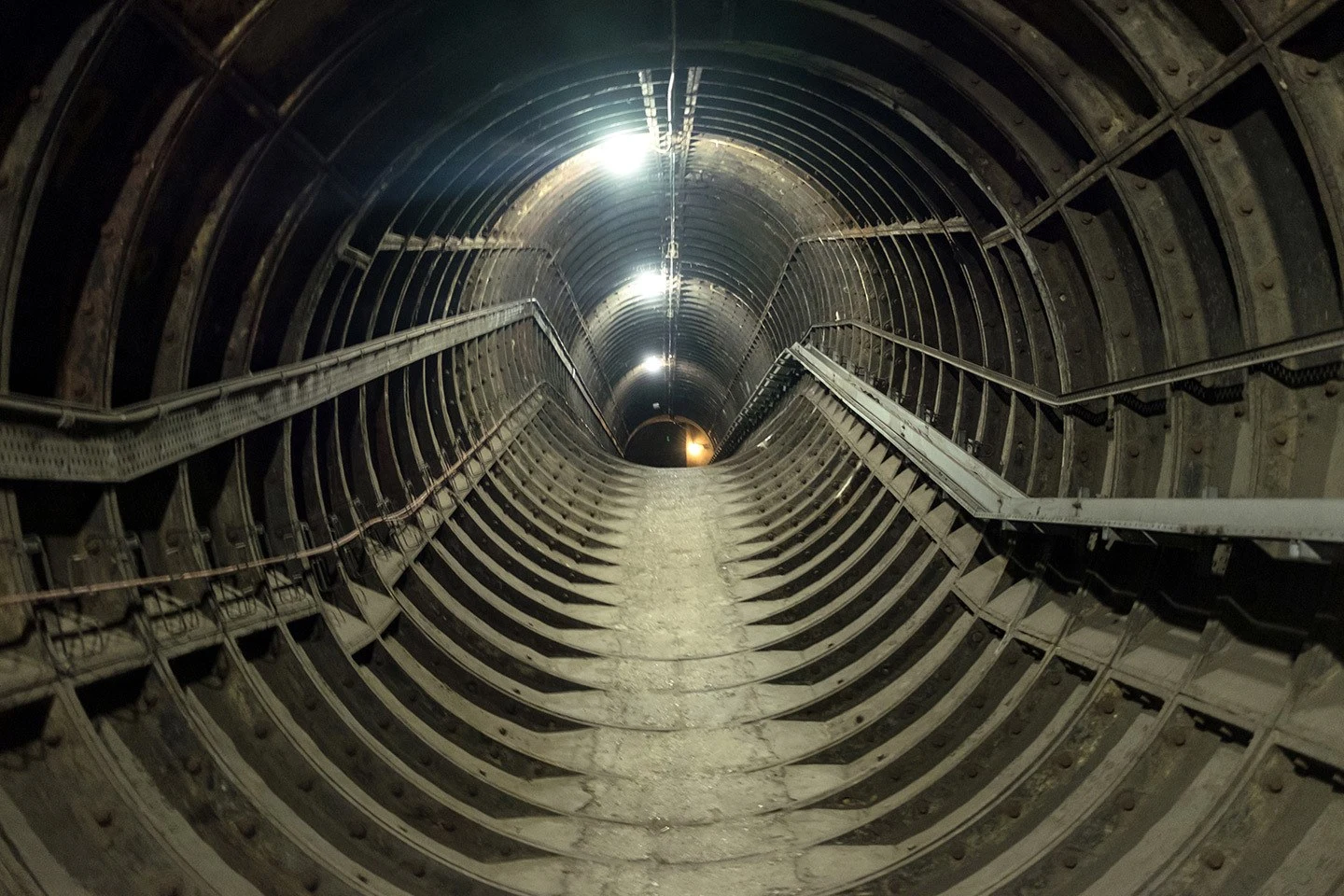
The deserted ventilation tunnels
Two hours later, we emerged back onto the Northern Line platform, shook off the dust, handed back our high-vis jackets and found ourselved back in the 21st century. It was a fascinating look into some of the Tube’s secrets and how much underground London has changed over the years.
The twists and turns of the Tube tunnels start to make sense when you look at how it grew over time. And it’s always evolving – new HS2 and Crossrail lines mean Euston is being redeveloped again, and the station layout keeps changing. Even the old Melton Street building is scheduled for demolition, so there might not be many more chances to uncover Euston’s secret tunnels.

Adverts for train travel
The details
Euston’s Lost Tunnels is one of the London Transport Museum’s Hidden London tours, which cover eight different underground sites across the city. The Euston tour costs £41.30 per person (£36.50 concessions) for the regular 75-minute tour, or £100 for the 2.5-hour photography tour, and all tickets include a one-day pass to London Transport Museum.
Hidden London tickets go on sale a few times a year and usually sell out fast, so it’s worth signing up to the mailing list to get notified when the next batch will be released. Please note the tour involves stairs, small spaces and uneven pathways, and there are no toilets on the route.


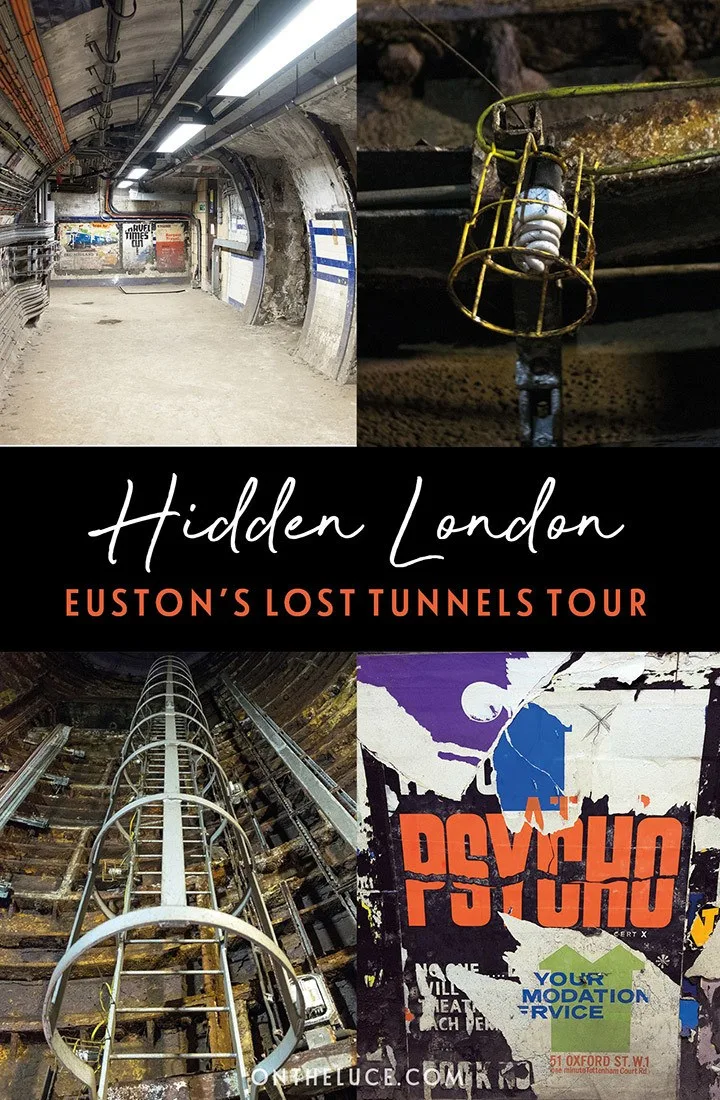
John
Sunday 2nd of July 2023
I went on a tour, unfortunately you always felt pressured because a member of the staff was always behind you. Sure, they had to watch out that no one stays left behind....
Lucy Dodsworth
Monday 3rd of July 2023
Ah that's a shame – I think as we were on the photography version of the tour we had more time so you could explore more and weren't rushed.
Geoffrey Whitfield
Friday 30th of December 2022
Please could you keep me updated to when tickets are available for the next tour.
Lucy Dodsworth
Saturday 31st of December 2022
If you sign up direct with Hidden London they have a mailing list for advance booking – you can add your details at https://www.ltmuseum.co.uk/whats-on/hidden-london/euston
MARTIN
Wednesday 17th of April 2019
So much History within the underground network and one of the best Highlights throughout London for any visitor traveling the City.
Lucy
Wednesday 24th of April 2019
It is a fascinating place – so many interesting stories.
Jay
Sunday 31st of March 2019
I really like the old posters on the walls and the aged decay, nice shots really frames the article quite well
Lucy
Monday 15th of April 2019
Thanks, it was a fascinating tour – I'm doing another later this year and can't wait.